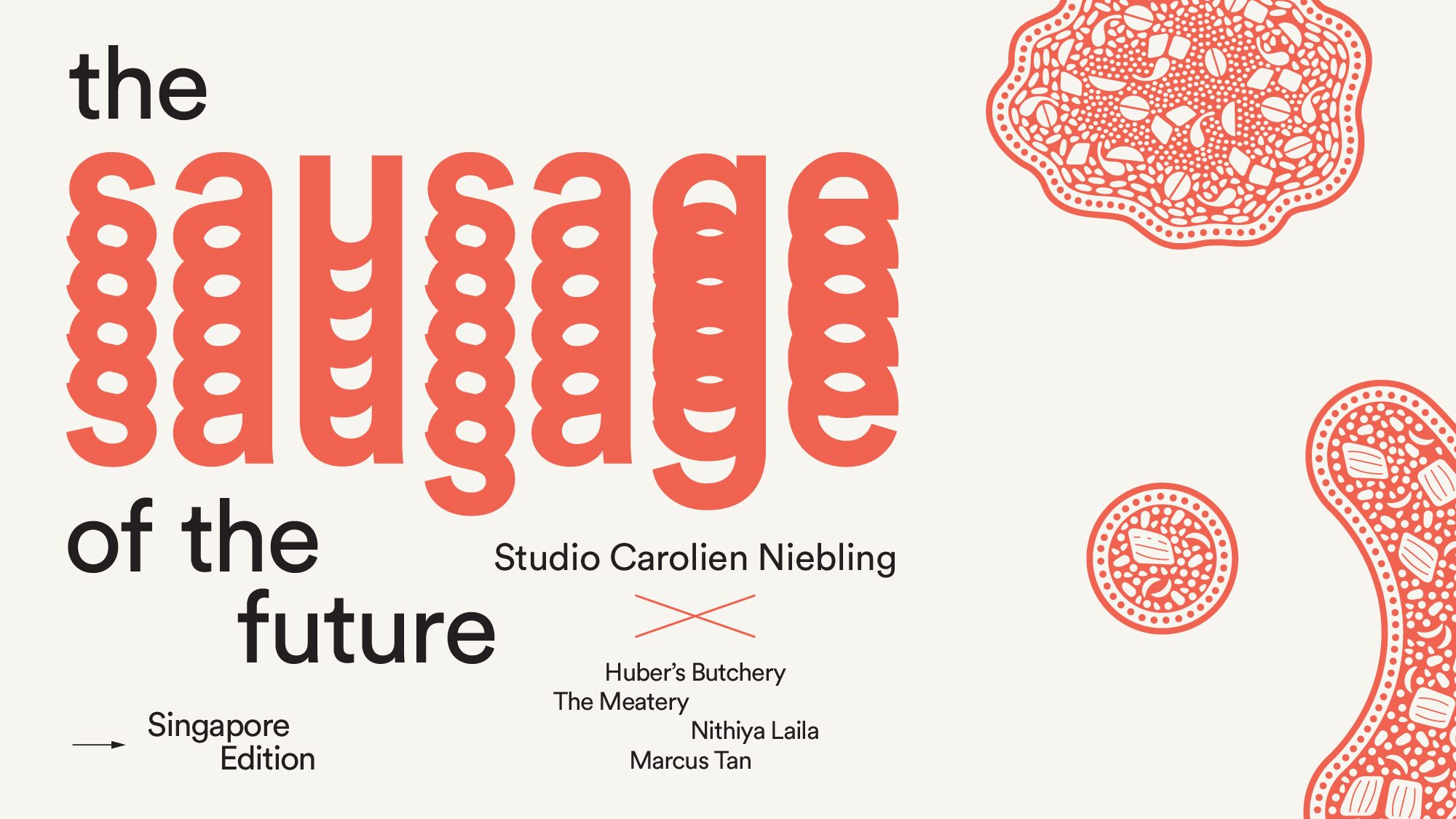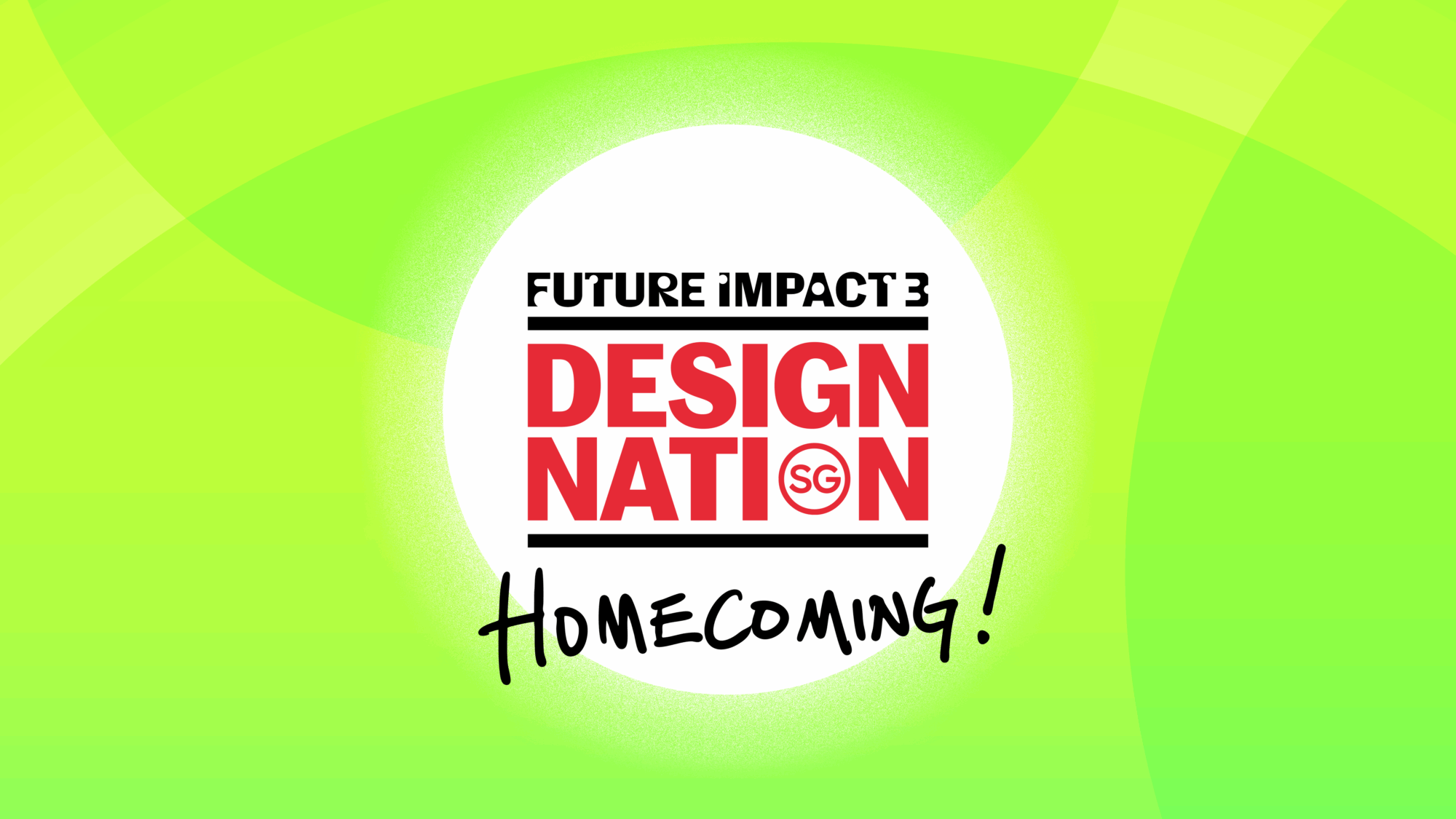When Creatives from Two Countries meet
As a UNESCO Creative City of Design, Singapore is part of a global Creative Cities Network that encourages creative collaborations among its members. In the past year, creatives from Singapore and Australia have been busy exchanging ideas and working together – physically and digitally – to present two projects at the 2019 Singapore Design Week. Pamela Ho finds out more about their multi-disciplinary collaborations.
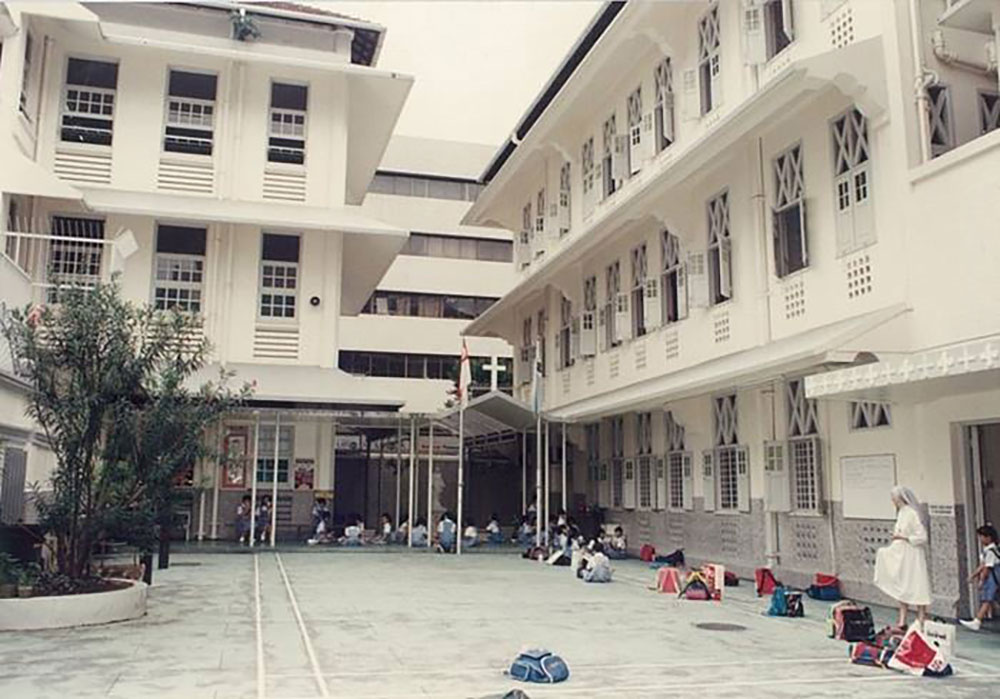
traces a schoolgirl’s journey through the busy streets of 1930s Bras Basah.Bugis. The current
National Design Centre occupies the former St Anthony’s Convent (pictured) from 1879
to 1994. Photo courtesy of Canossian Daughters of Charity
When Australian creative producer Jennifer Greer Holmes lands in a new place, she sets out on foot with her headphones on, and tries to find the perfect soundtrack to discover the city. “In Berlin, for example, I always listen to the music of Iggy Pop, David Bowie and Peaches, who all lived there at some point. In Philadelphia, I listened to heaps of soul music. It informs the way I look at a city,” says Holmes, who produces for theatrical music performances, videos and experimental theatre.
Her experience of life is very much influenced by her love of music. “Everything I do has a very strong aural component,” says Holmes, who is based in Adelaide, a UNESCO Creative City of Music. “What’s playing in my ear can really effect what I notice and pay attention to.”
Holmes now has a special soundtrack for Singapore too – specifically the Bras Basah.Bugis precinct where the National Design Centre is situated.
Moving to the beat of Bras Basah.Bugis
The inspiration and genesis of this soundtrack goes back to 2018 when Holmes visited Singapore as part of the first joint UNESCO Creative Cities project between Adelaide City of Music, Sydney City of Film, Melbourne City of Literature, and Singapore City of Design.
She and two other Australian creatives Jane Beeke and Thuy Nguyen had been picked through an open call to co-create inclusive design community projects inspired by music, literature and film. They participated in a workshop and public forum during the 2018 Singapore Design Week –presenting ideas and meeting local creatives to explore how they might realise those ideas together.
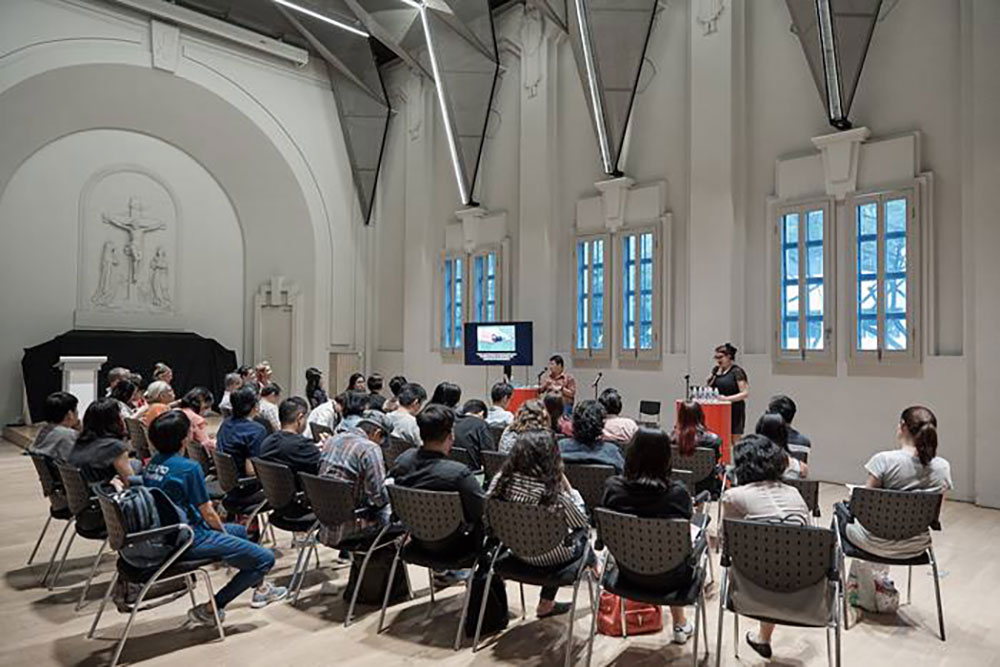
Following this visit, two projects (Move Along and The Community Thread) were selected for final presentation at the 2019 Singapore Design Week.
For Holmes, the value of being part of the UNESCO Creative Cities Network (UCCN) has been the exposure to creatives from diverse backgrounds. Among those she met at SDW 2018 was the Singaporean multidisciplinary artist who goes by the moniker Ferry. The duo paired up to work on Holmes’ project Move Along, a walking art experience.
Move Along was inspired by the similarities between the post-colonial cities of Adelaide and Singapore, and is a site-specific live artwork that explores the universal stories of love and loss, urban renewal and dispossession. With the Bras Basah.Bugis (BBB) district as the backdrop, Holmes has designed a soundtrack to respond to Singapore’s streets.
Creating a site-specific work when one is not a local or on-site has its challenges. “Working with Ferry over the past year has been wonderful because she not only understands the environment and culture, she’s also familiar with the type of work I’m trying to make.”
Ferry adds, “It was really engaging to riff off each other and just dialogue about possibilities. Cross-border just meant she’s there, I’m here. Artistically, that didn’t matter at all. For me, collaboration is always about finding common ground and learning from each other’s stories and perspectives. What was most interesting for me was seeing the whole process unfold – how music can change the atmosphere of a place, which may have become commonplace, and form new connections to it.”
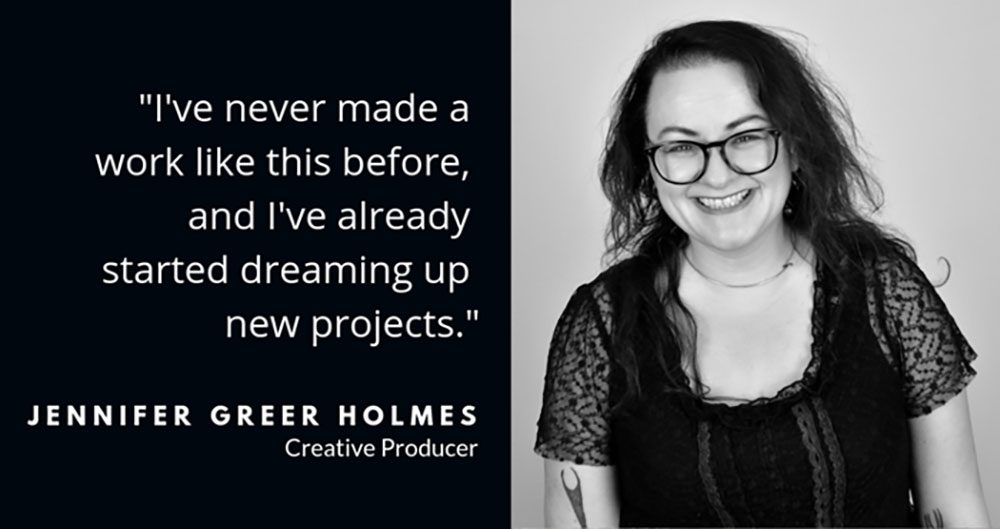
For Holmes, who also choreographed a live performance, it was a massive learning experience. After producing others’ work for years, this experience has given her a new confidence to make her own. “I’ve never made a work like this before, and I’ve already started dreaming up new projects.”
The common thread
For Sydney-based museum professional and emerging writer Jane Beeke, travelling to Singapore and experiencing first-hand the work of Singaporean creatives at SDW 2018, informed her approach to The Community Thread in a big way.
In particular, the district activation at Holland Village – which she found “fantastically fun, accessible and cerebral” – and the Open House at Emerald Hill, which moved her with its “brave interrogation of colonial myth-making”.

exhibits, including this “phone jail”.
Photo courtesy of Jane Beeke
“I like the idea of putting heritage back on the streets and into communities in a way that is a bit wacky and unexpected and fun,” says Beeke, who teamed up with a multidisciplinary crop of Singaporean creatives to design an augmented reality (AR) walking tour celebrating the heritage of the BBB district.
“As a writer, I’m used to working alone and carrying all my ideas in my head. Even in cultural institutions, I work fairly autonomously. So it was a shift in thinking for me to communicate in more detail around my ideas and planning, and then to do so primarily in a digital format.”
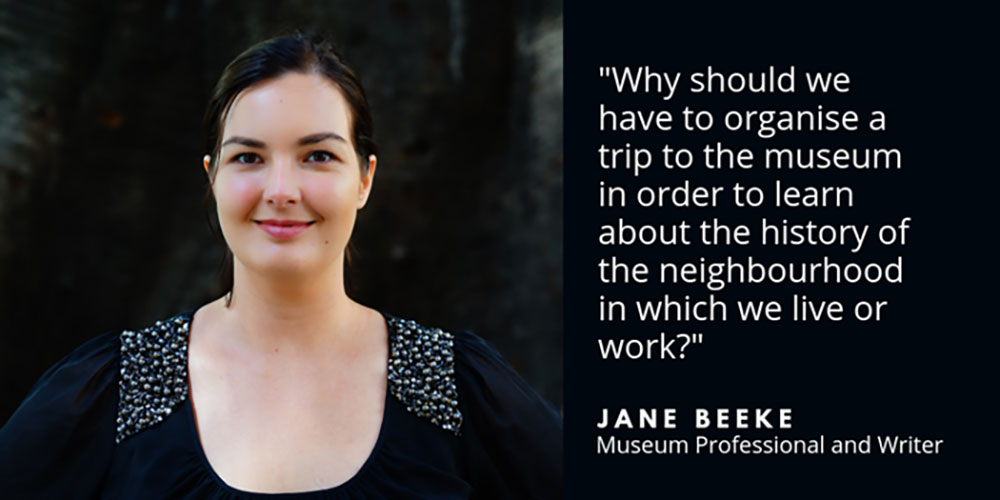
The self-guided walking tour traces a schoolgirl’s journey through the busy streets of 1930s BBB, and invites participants to follow the narrative through five sites in Queen Street and Waterloo Street.
The co-created work features typographical artwork by theregularjo, and AR activations by MeshMinds. “Stories about the past come to define our sense of belonging, and so it’s absolutely vital that everyone gets a chance to participate in their creation,” says Beeke, who also worked with local design studio Participate in Design to enable participants to add their own chapters to the story.
“Why should we have to organise a trip to the museum in order to learn about the history of the neighbourhood in which we live or work?” she questions, adding that she now sees the potential of involving design professionals in the museum and heritage sectors, “not just from an exhibition design perspective or in heritage architecture, but in really thinking about the ways we create conversations about the past in communities.”
The Community Thread is a pioneering mix of art, technology and inclusive design (Braille translation is provided at each artwork location, and all sites are wheelchair/walker accessible), says Kay Vasey of MeshMinds. “We’re literally writing the narrative onto the streets, creating a real-world, auditory and literary experience, brought to life using mobile technology and AR,” she elaborates, adding quite incredulously that the planning was all done through WhatsApp, email and Google Hangout.
Such cross-cultural and cross-disciplinary collaborations within the UCCN have tremendous value, says Beeke. “It provides a setting for fantastically left-field, open-ended conversations between people of such disparate professional backgrounds. I can’t imagine where else I’d be able to learn the things I’ve learnt or have the kind of conversations I’ve been able to have. I know that I’ve come out of this experience full of new ideas and a better practitioner than I was before.”
UNESCO Creative Cities Network
The UNESCO Creative Cities Network (UCCN) was created in 2004 to promote cooperation among cities that have identified creativity as a strategic factor for sustainable urban development. Currently numbering 180 cities, the network covers seven fields: Design, Literature, Music, Film, Crafts and Folk Arts, Media Arts and Gastronomy. In 2015, Singapore was designated a UNESCO Creative City of Design.
This year, Singapore is hosting its first UNESCO Creative Cities of Design Public Forum during the Singapore Design Week. Representatives from UNESCO Creative Cities of Design, including Singapore, will share their efforts in designing for impact in education, public policy, business and communications.





